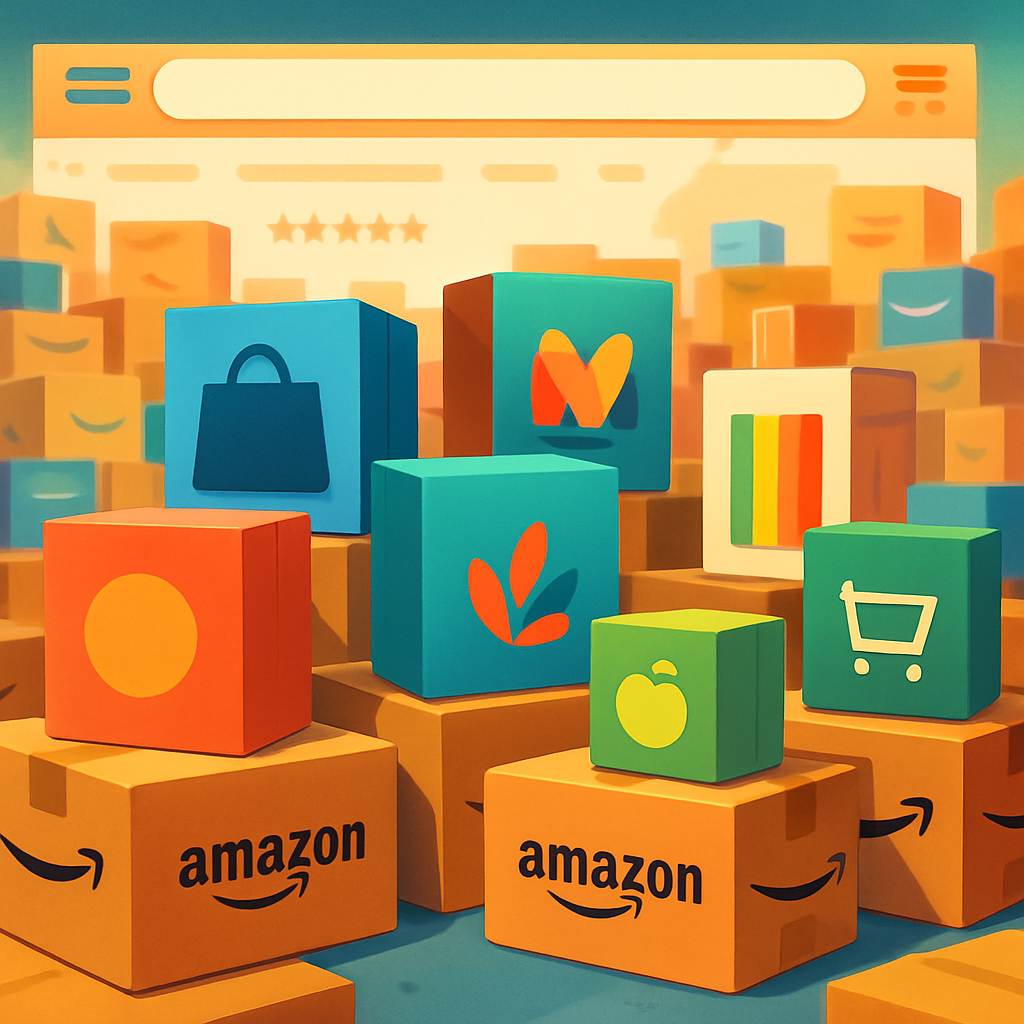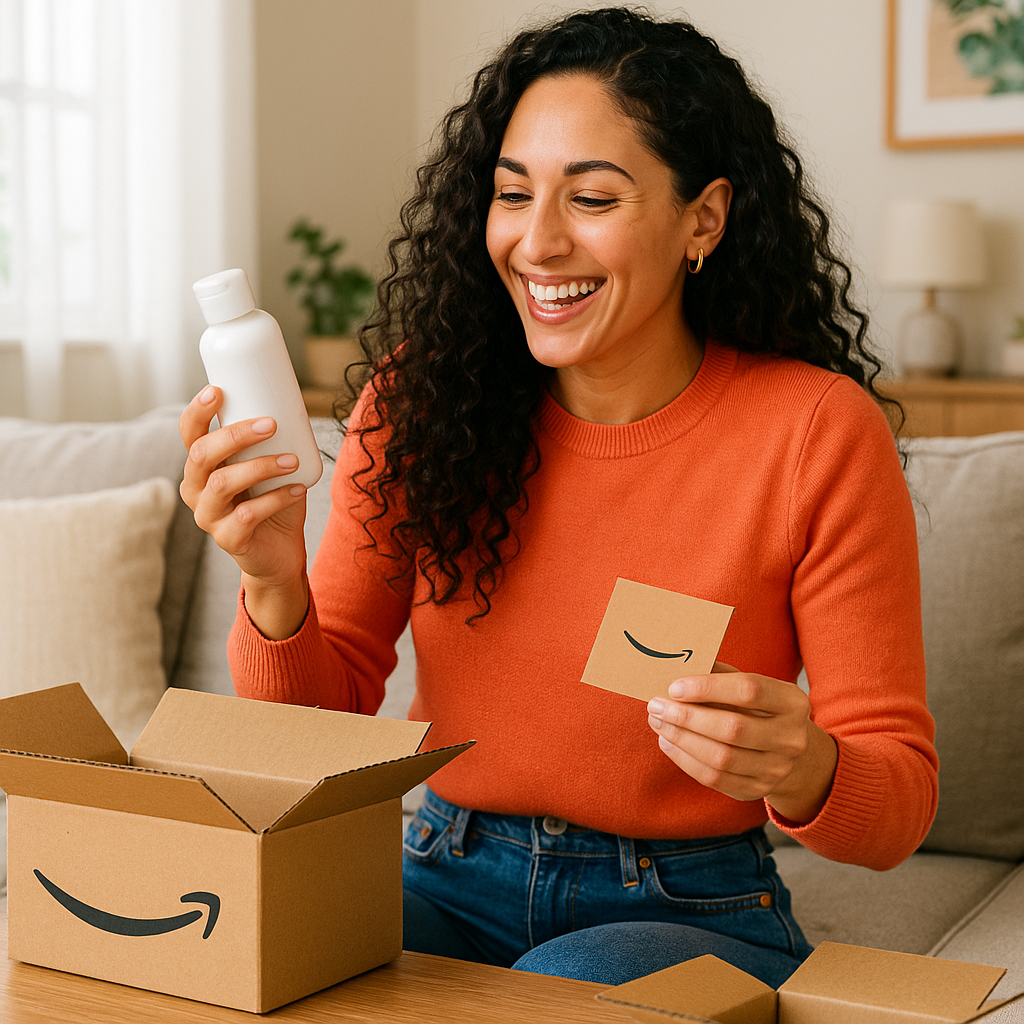How to Build Brand Loyalty on Amazon in 2024
Brand loyalty on Amazon is no longer a luxury—it’s a necessity for sustainable growth in the increasingly competitive marketplace. As we navigate through 2024, building a loyal customer base has become crucial for sellers looking to differentiate themselves among millions of products. True brand loyalty goes beyond repeat purchases; it encompasses customer trust, emotional connection, and advocacy that drives sustainable business growth.
In today’s Amazon ecosystem, consumers have endless options at their fingertips.
Creating meaningful relationships with customers can transform your business from just another listing to a preferred brand that shoppers actively seek out. Throughout this guide, you’ll discover actionable strategies to foster genuine customer connections, leverage Amazon’s powerful analytics tools, and implement retention tactics that convert one-time buyers into lifelong advocates.
Understanding Amazon’s brand loyalty ecosystem
The Amazon marketplace operates under a unique set of rules that fundamentally changes how brand loyalty functions compared to direct-to-consumer websites. On the platform, customers often prioritize convenience and trust in Amazon itself rather than individual sellers.
Amazon Prime membership has revolutionized customer expectations across the board. With over 200 million Prime members globally, shoppers now consider fast shipping and hassle-free returns as baseline requirements rather than premium perks. This creates both challenges and opportunities for brands trying to stand out.
The platform’s customer-centric approach has established extraordinary service standards that all sellers must meet or exceed. For instance, Amazon’s own business practices—like automatic price adjustment refunds and frictionless returns—have conditioned consumers to expect nothing less from every merchant on the platform.
Competition on Amazon is fiercer than ever, with thousands of new sellers joining monthly. This saturation means customers can easily find alternatives if your product or service disappoints. The good news? When you deliver exceptional experiences consistently, those same marketplace dynamics can work in your favor, as satisfied customers become repeat buyers despite countless alternatives.
Key factors driving brand loyalty on Amazon
Building brand loyalty on Amazon requires understanding what truly motivates repeat purchasing behavior on this unique platform. Several critical elements contribute to fostering customer devotion in ways specific to the Amazon ecosystem.
Product quality consistency stands as the foundation of any loyalty strategy. Even with perfect marketing, subpar products will never generate true brand advocates. Quality doesn’t necessarily mean luxury—it means delivering exactly what customers expect based on your listing promises. This consistency builds the trust necessary for shoppers to return to your brand without hesitation.
Customer service excellence separates forgettable transactions from memorable brand experiences. Response time matters tremendously—Amazon shoppers expect replies within hours, not days. More importantly, the tone and helpfulness of your customer service team can transform potential negative experiences into loyalty-building moments.
- transparent pricing without hidden fees
- fast and reliable shipping that meets or exceeds expectations
- hassle-free return policies that reduce purchase anxiety
- authentic engagement with customer questions and reviews
- consistent product experience across all listings
Value proposition clarity helps customers understand why they should choose your brand repeatedly. This goes beyond competitive pricing to include your brand story, values, and what makes your products distinct. When customers connect with these elements, price sensitivity decreases, and relationship strength increases.
The post-purchase experience often determines whether customers return.
From packaging design and unboxing experience to follow-up communication and support, these touchpoints solidify the customer relationship. Thoughtful inserts, personalized thank-you notes, and easy-to-access support create emotional connections that automated competitors simply cannot match.
Leveraging Amazon’s tools & data for loyalty growth
Amazon provides sellers with sophisticated analytics capabilities that, when properly utilized, can transform customer retention strategies. Understanding these tools is essential for data-driven loyalty building in 2024.
Customer Loyalty Analytics represents one of Amazon’s most powerful yet underutilized features for brand building. Located within Brand Analytics in Seller Central, this dashboard offers unprecedented visibility into customer behavior patterns. To access it, navigate to Brand Analytics, then select “Customer Loyalty” from the dropdown menu. Here you’ll discover critical metrics about your repeat customers, including purchase frequency and spend levels.
The RFM (Recency, Frequency, Monetary) framework within the loyalty dashboard helps categorize your customer base into actionable segments. This model evaluates customers based on how recently they’ve purchased, how frequently they buy, and how much they spend. Amazon automatically creates four key segments:
- Top Tier: Your most valuable customers who purchase frequently and recently
- Promising: Customers showing potential for increased loyalty
- At Risk: Previously active customers showing declining engagement
- Hibernating: Previously active customers with no recent purchases
Each segment requires distinct retention approaches. For Top Tier customers, focus on recognition and exclusive experiences that reinforce their decision to remain loyal. For Promising customers, implement engagement strategies that encourage more frequent purchases. At Risk customers respond well to re-engagement campaigns highlighting new products or improvements, while Hibernating customers often need stronger incentives to return.
Amazon’s advertising platform offers powerful customer retention capabilities through remarketing campaigns. Sponsored Brands and Sponsored Display ads can be specifically targeted to previous customers, keeping your products top-of-mind. By creating custom audiences based on purchase behavior, you can deliver tailored messaging to different customer segments, reinforcing loyalty at critical decision points.
Example strategy: Using RFM to prioritize loyalty campaigns
Consider how a home goods brand might implement an RFM-based approach. After analyzing their customer loyalty analytics, they identify a substantial “At Risk” segment—customers who previously purchased kitchen products regularly but haven’t returned in 60+ days. Rather than sending generic promotions, they create a targeted campaign showcasing new complementary products with exclusive discounts for returning customers. This personalized approach acknowledges the customer’s previous relationship while providing specific value to encourage re-engagement.
Subscribe & Save represents another powerful retention mechanism. Brands selling consumable products can leverage this program to create predictable revenue streams while offering customers convenience and savings. Products enrolled in Subscribe & Save typically see higher customer lifetime value figures and more predictable inventory needs. The key to success lies in selecting appropriate products (consumables with predictable usage patterns) and providing sufficient value to justify subscription commitment.
Winning strategies for long-term loyalty
Creating lasting brand relationships on Amazon requires strategic approaches that extend beyond transactional interactions. These proven tactics help establish deeper connections that withstand competitive pressures and price sensitivity.
Emotional connection distinguishes true brand loyalty from mere repeat purchasing. While Amazon’s ecosystem can make personal connection challenging, strategic communication opportunities exist. Your product detail page storytelling, About Brand section, and A+ Content provide valuable real estate for communicating brand values and mission. When customers connect with your brand’s purpose—whether sustainability, quality craftsmanship, or innovation—they develop relationship bonds that transcend individual transactions.
The unboxing experience creates powerful opportunities for strengthening customer affinity.
Despite fulfilling through Amazon, you control product packaging design and inserts (following Amazon’s guidelines). Consider how premium packaging, thoughtful design elements, and useful information can transform delivery into a memorable brand moment. Many successful Amazon sellers include QR codes linking to exclusive content, assembly tutorials, or registration for extended warranties—adding value while building direct customer relationships.
Review management represents a critical loyalty touchpoint often overlooked by sellers focused solely on acquisition. When customers take time to leave feedback, your response demonstrates how much you value their opinion. Address negative reviews with genuine concern and solution-oriented responses. For positive reviews, express authentic gratitude. This visible engagement shows prospective customers your commitment to satisfaction while strengthening relationships with existing buyers.
Post-purchase communication, when executed appropriately within Amazon’s terms of service, significantly impacts retention. Request feedback at optimal times—after customers have experienced your product’s value but before enthusiasm fades. Consider using Amazon’s “Request a Review” button or automated tools that send customized messages through Buyer-Seller Messaging. Focus communications on enhancing the customer’s experience rather than merely soliciting reviews.
Service recovery excellence transforms negative experiences into loyalty-building opportunities. When mistakes happen (and they inevitably will), your response determines whether customers abandon your brand or become even stronger advocates. Amazon data shows that customers whose problems are resolved quickly and generously often become more loyal than those who never experienced issues. Prioritize rapid response, empathetic communication, and generous solutions that exceed expectations.
Customer community building extends relationship development beyond the Amazon platform. While direct customer contact has limitations within Amazon’s ecosystem, brands can create communities through social media, dedicated websites, or exclusive groups. These spaces allow deeper engagement, provide valuable feedback channels, and create brand advocates who influence new customers. Consider including tasteful invitations to these communities in your packaging or product documentation.
Expectation management plays a crucial role in customer satisfaction and subsequent loyalty. Many customer disappointments stem from mismatched expectations rather than product failures. Ensure product listings accurately represent what customers will receive, avoiding the temptation to overpromise. Be transparent about product limitations, required maintenance, or learning curves. When customers receive exactly what they expected—or better—trust and loyalty naturally follow.
Conclusion
Building brand loyalty on Amazon in 2024 requires a multifaceted approach that balances platform-specific strategies with timeless customer relationship principles. As competition intensifies, the brands that prioritize meaningful connections, leverage data intelligently, and deliver consistent excellence will secure lasting customer loyalty.
By understanding Amazon’s unique ecosystem, utilizing the platform’s powerful analytics tools, and implementing the targeted strategies outlined in this guide, you can transform transactional relationships into genuine brand loyalty. Remember that true loyalty develops gradually through consistent positive experiences—each interaction represents an opportunity to strengthen customer connections.
The most successful Amazon brands recognize that loyalty isn’t merely about repeat purchases but about creating brand advocates who choose your products despite countless alternatives. As you implement these strategies, focus on delivering authentic value at every customer touchpoint. In doing so, you’ll build a resilient brand presence that thrives regardless of marketplace fluctuations or competitive pressures.
Frequently asked questions
What is brand loyalty on Amazon and why is it important?
Brand loyalty on Amazon is when customers consistently choose your products over competitors. It’s crucial because loyal shoppers are more profitable, buy more often, and serve as brand advocates.
What tools does Amazon provide for tracking customer loyalty?
Amazon offers Customer Loyalty Analytics within Seller Central, providing insights and segmentation to help brands understand and grow their loyal customer base.
How can I encourage repeat purchases from my Amazon customers?
Leverage Subscribe & Save, run targeted ad campaigns, offer exclusive deals to repeat buyers, and maintain excellent product and service quality.
Should Amazon sellers create their own loyalty program?
While Amazon controls many loyalty features (e.g., Prime), sellers can supplement with post-purchase follow-ups, great unboxing experiences, and branded inserts where allowed.
What is the difference between customer loyalty and brand loyalty on Amazon?
Customer loyalty often refers to repeat purchasing based on price or rewards, while brand loyalty is deeper and rooted in emotional connection and trust with your brand specifically.
